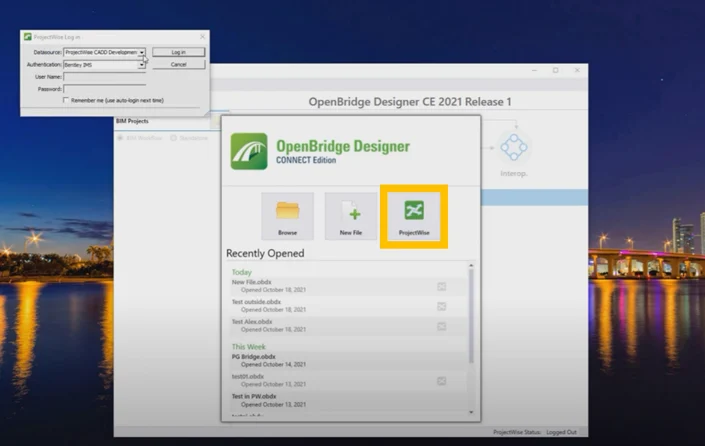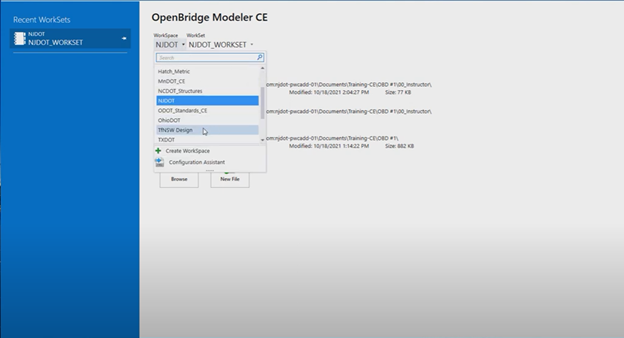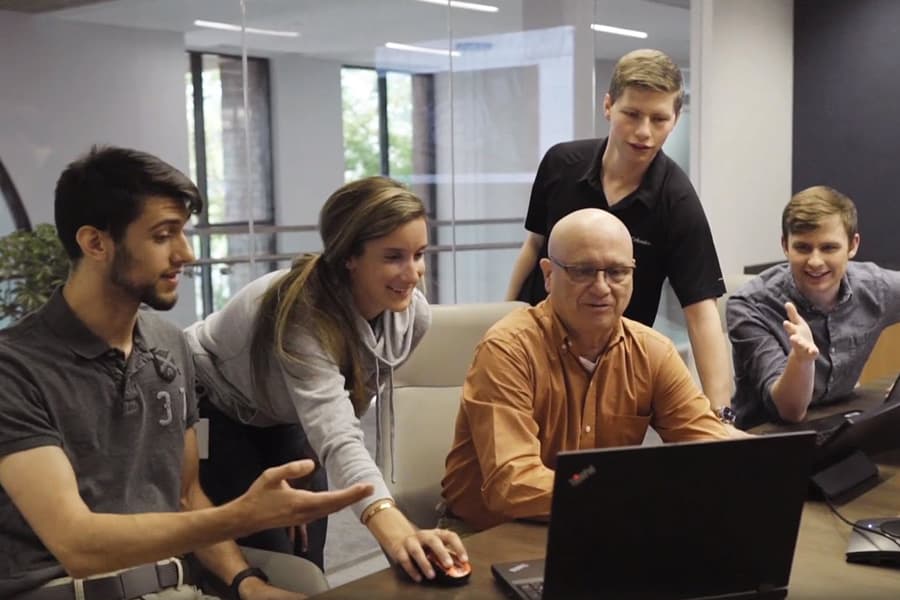Berenisce Ramos: Structural Engineer
Traditionally, as bridge engineers in Texas designing bridges for TXDOT (Texas Department of Transportation), we used MicroStation to produce our plan set. The sheets for bridge details and layouts were done in 2D. In the past, we used Geopak to check for some elevations and to make sure we were programming our alignment correctly into bridge design software (PGSuper, BGS, etc.).
The standard design flow was going from software to design girders, the caps, and getting the geometry to put it on 2D plans using MicroStation. Usually, a CAD technician would download files from the TXDOT page and set up the sheets. Some details were templates from TXDOT. We would run designs and modify them with the correct geometry, beams, strands, and cap reinforcement.
It was necessary to have a good workflow to create our sheets and produce the right design on the plan set. Juggling the bridge design software and the detailing sheets can be challenging for the bridge team if you do not pay close attention. The right design must be inputted in the detailing sheets, and the right alignment information must be called out correctly on the bridge layouts. An engineer or a CAD technician inputted the information. This step is where mistakes can happen. It is a big effort to QA/QC; checking the design, calling out stations, and offsets for the bridge.

When collaborating with other ventures, it is important to match sheets and produce bridge geometry that concurs among two or three companies. Modeling bridges in 3D helps coordinate and deliver fast, seamless, and correct designs no matter how many companies or disciplines work together. Also, a helpful tool that we used often was ProjectWise. It assisted us in sharing the most updated designs amongst the companies and kept track of file edits. One can lock files to prevent them from being deleted or edited by the wrong people, and sharing them without risk was also convenient. Using ProjectWise within the company offered the same protection and helped coordinate ownership of designs and files.
I originally ran into OpenBridge when we began designing bridges in LEAP. You can export bridge geometry into LEAP. Therefore, one can be certain the correct geometry is inputted for design. OpenBridge Designer offers a one-stop for design and CAD.
With Workspace, smart alignment leaders are tied to the bridge geometry; If the alignment changes, so do the call-outs, which is a huge help. OpenBridge Designer runs girder designs as well. Having all the components of bridge design, calculations, and CAD capabilities in one software is smart and leads to less human error.
This June, Texas DOT, like how 12 other DOTs in the US moved into OpenBridge, now requires consultants to deliver OpenBridge designs. With OpenBridge, you can see all the elements modeled. Human error is significantly reduced by modeling in 3D because the client can see the design. No wonder, so many DOTs are moving toward 3D modeling. The future of DOT road and bridge design is 3D.
Digital Project Deliverable is not just a buzzword, but a reality that owner-operators are looking to implement now. 3D software is extremely helpful in training people to understand bridge components. Besides loads, the biggest challenge in training new bridge engineers is helping them understand the bridge superstructure components—for example, the haunch and thickened slabs. Overall, modeling cuts time and delivers more accurate designs. OpenBridge will reduce your design effort and plan set production and minimize change orders when it goes to construction. The software helps you have the right information on the plan set and helps both the designer and contractor build better bridges.
About the Author
Berenisce Ramos graduated from New Mexico State University with a bachelor’s and a master’s in civil engineering, with an emphasis on structural analysis and design. She has 12 years of experience designing bridges and other structures. In her bridge design career, she has designed intricate bridges such as curved interstate bridges, asymmetrical bridges with tappers, saddle bents, and truss bridges. She modeled the Kinzua bridge in PA with RISA 3D software, and to accelerate the modeling; she used MicroStation to import dxf files into Risa 3D. This resulted in the complete 3D modeling of the historic bridge, which is now a pedestrian overlook. 3D Modeling is a big part of her career. Some of her favorite software are OpenBridge, Risa 3D, and STAAD, and she always checks the designs with hand calculations.
“It has been easy for me to move from software to software because I understand the loads and geometry. That is key to modeling any structure. In my career, I have never shied away from any design, from bridges to pipe systems for rocket engines.” – Berenisce Ramos.
Want to learn more? Click the on the button below to book a meeting with a product sales engineer, or register for the webinar.












